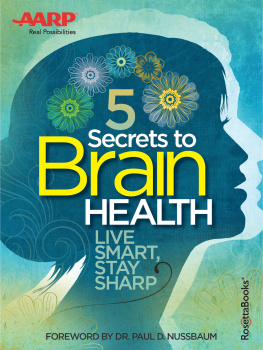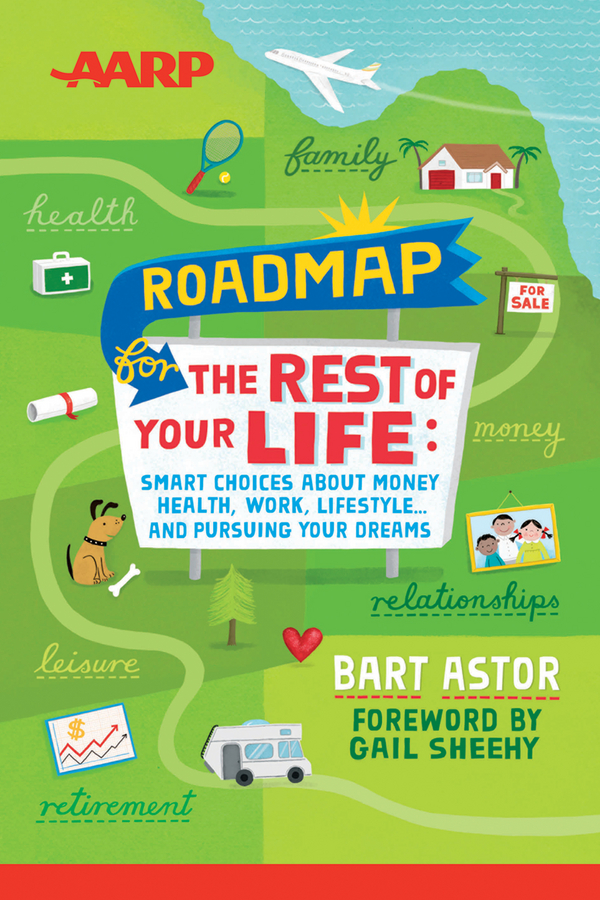Contents

Cover: Scott A. Davis, Creative Director; Anne Masters, Art Director; Linzie Hunter, Illustrator.
Copyright 2013 by Bart Astor. All rights reserved.
Published by John Wiley & Sons, Inc., Hoboken, New Jersey.
Published simultaneously in Canada.
No part of this publication may be reproduced, stored in a retrieval system, or transmitted in any form or by any means, electronic, mechanical, photocopying, recording, scanning, or otherwise, except as permitted under Section 107 or 108 of the 1976 United States Copyright Act, without either the prior written permission of the Publisher, or authorization through payment of the appropriate per-copy fee to the Copyright Clearance Center, Inc., 222 Rosewood Drive, Danvers, MA 01923, (978) 750-8400, fax (978) 646-8600, or on the Web at www.copyright.com . Requests to the Publisher for permission should be addressed to the Permissions Department, John Wiley & Sons, Inc., 111 River Street, Hoboken, NJ 07030, (201) 748-6011, fax (201) 748-6008, or online at http://www.wiley.com/go/permissions .
Portions of this material originally appeared in Bart Astors Baby Boomers Guide to Caring for Aging Parents . Parts of the section on Medicare and Medigap were from AARPs Social Security For Dummies by Jonathan Peterson (John Wiley & Sons, 2012). This material is reproduced with permission of John Wiley & Sons, Inc.
Limit of Liability/Disclaimer of Warranty: The publisher, AARP, and the author make no representations or warranties with respect to the accuracy or completeness of the contents of this work and specifically disclaim all warranties of merchantability or fitness for a particular purpose. No warranty may be created or extended by sales representatives or written sales materials. The advice and strategies contained herein may not be suitable for your situation. This work is sold with the understanding that the publisher and AARP are not engaged in rendering legal, accounting, tax, or other professional services. If professional assistance is required, the services of a competent professional person should be sought. The publisher, AARP, and the author shall not be liable for damages arising herefrom. The fact that an organization or web site is referred to in this work as a citation and/or a potential source of further information does not mean that the author, AARP, or the publisher endorses the information the organization or web site may provide or recommendations it may make. Further, readers should be aware that Internet web sites listed in this work may have changed or disappeared between when this work was written and when it is read.
This and other AARP books are available in print and e-formats at AARPs online bookstore, aarp.org/bookstore , and through local and online bookstores.
AARP is a registered trademark.
For general information on our other products and services or for technical support, please contact our Customer Care Department within the United States at (800) 762-2974, outside the United States at (317) 572-3993 or fax (317) 572-4002.
Wiley publishes in a variety of print and electronic formats and by print-on-demand. Some material included with standard print versions of this book may not be included in e-books or in print-on-demand. For more information about Wiley products, visit www.wiley.com .
Library of Congress Cataloging-in-Publication Data:
Astor, Bart.
Roadmap for the rest of your life : smart choices about money health, work, lifestyle... and pursuing your dreams / Bart Astor.
pages cm
Subtitle should read:
Includes index.
ISBN 978-1-118-40112-5 (pbk.); ISBN 978-1-118-79575-9 (ebk); ISBN 978-1-118-49568-1 (ebk); ISBN 978-1-118-49572-8 (ebk)
1. RetirementPlanning. 2. Older peopleFinance, Personal. 3. AgingSocial aspects. 4. Lifestyles. I. Title.
HQ1062.A78 2013
332.024'014dc23
2012051174
To Kathie, the North Star on my roadmap
Foreword
When you imagine the rest of your life after 50, do you see a boat, a sports car, a summer home, cruising the Amazon or climbing Kilimanjaro, or finding a quiet corner in your backyard, or a patch of thatched cottage in the Caribbean, to curl up and write your memoir?
Have you also factored in the cost of a grown childs wedding, the travel costs to see your scattered children and grandkids, and the grandbaby who turns four before you know it and will need about $10,000 for a good prekindergarten? The question is not just how long you want to work, but how long you need to work. And I mean need not just in the sense of financial need, but the psychological need to have colleagues to talk to, phone calls to return, and the feeling of being valued.
We have learned a great deal about how to set goals for our First Adulthood and how to roll with the punches when we hit a rough passage. But our Second Adulthood, when we really have grown up, presents a much less linear roadmap. There are no fixed entrances or exits, and there is a lot of sand in which it is easy to bury our heads. Many of us over 50 turn into ostriches. We may be totally rational when we look at a profit-and-loss statement in business. But we dont like to look at our personal assets and project the changes in profit when were no longer working full tilt, or the possibility that digitalization will make our former job obsolete, or the cost of caring for Dad when Mom dies. We dont really want to look at whats right in front of us: another 30, 40, even possibly 50 years of life to be financed and filled with meaningful activities and replenished relationships.
Bart Astors friendly, experience-based book focuses on all that and is surprisingly readable. It is a book for those of us who dont want to be victims.
Im guilty of being an ostrich. When I finally did force myself to sit down with Astors manuscript, I found myself returning to the central question facing us as we move into our Second Adulthood: What are our goals for this stage in our lives? There really are no more shoulds. Our parents and mentors and bosses dont have much to say about our choices at this stage. A spouse, if we have one, might be one of the Worried Wellpeople who anticipate the worst, save for a rainy day, and buy the most expensive long-term care insurance. They may even prepay for pet burial. Those people will never run out of money. Im not one of them.
Financial planners tell me there are many more ostriches than Worried Well. Even a very affluent person, lets say a successful single woman who figures she will cut back to half-time work at 66 and retire completely at 70, may think assets worth a million dollars plus her house are enough to last the rest of her life. But once she cuts her income in half by working part-time, and the cost of living goes up 5 percent a year, and she has to pay taxes on the money she takes out of her individual retirement account (IRA), and she continues with the same lifestyle and spending habits like buying $500 boots, and she wants to pay for her grandson to go to medical school, she may run out of money before shes 80. Then the staggering cost of long-term care for chronic illness or disability kicks in and shes stunned, like so many people, that Medicare does not pay for long-term care.
I found Astors 11 chapters very helpful in breaking down the right questions into manageable steps, with capsule life stories and helpful tips. He starts us off by defining how much activity we can manage. Thats smart. Setting the goal of opening an independent bookstore might sound idyllic, but not if we arent fit enough to haul around a lot of very heavy books. How about creating a commercial book-swapping website instead? Or going into business with a son or daughter who can do the heavy lifting while you develop the strategic plans for engaging a following?







